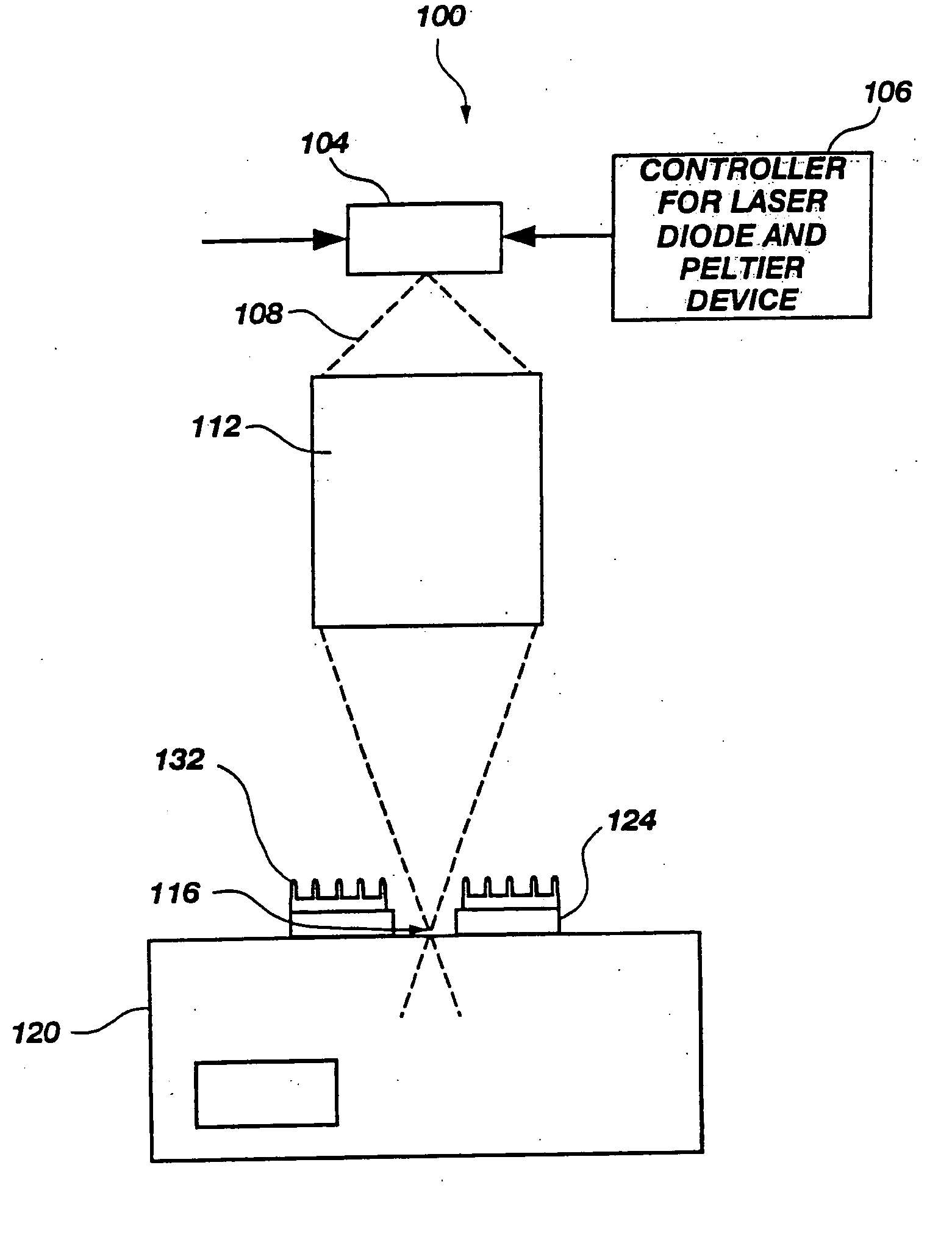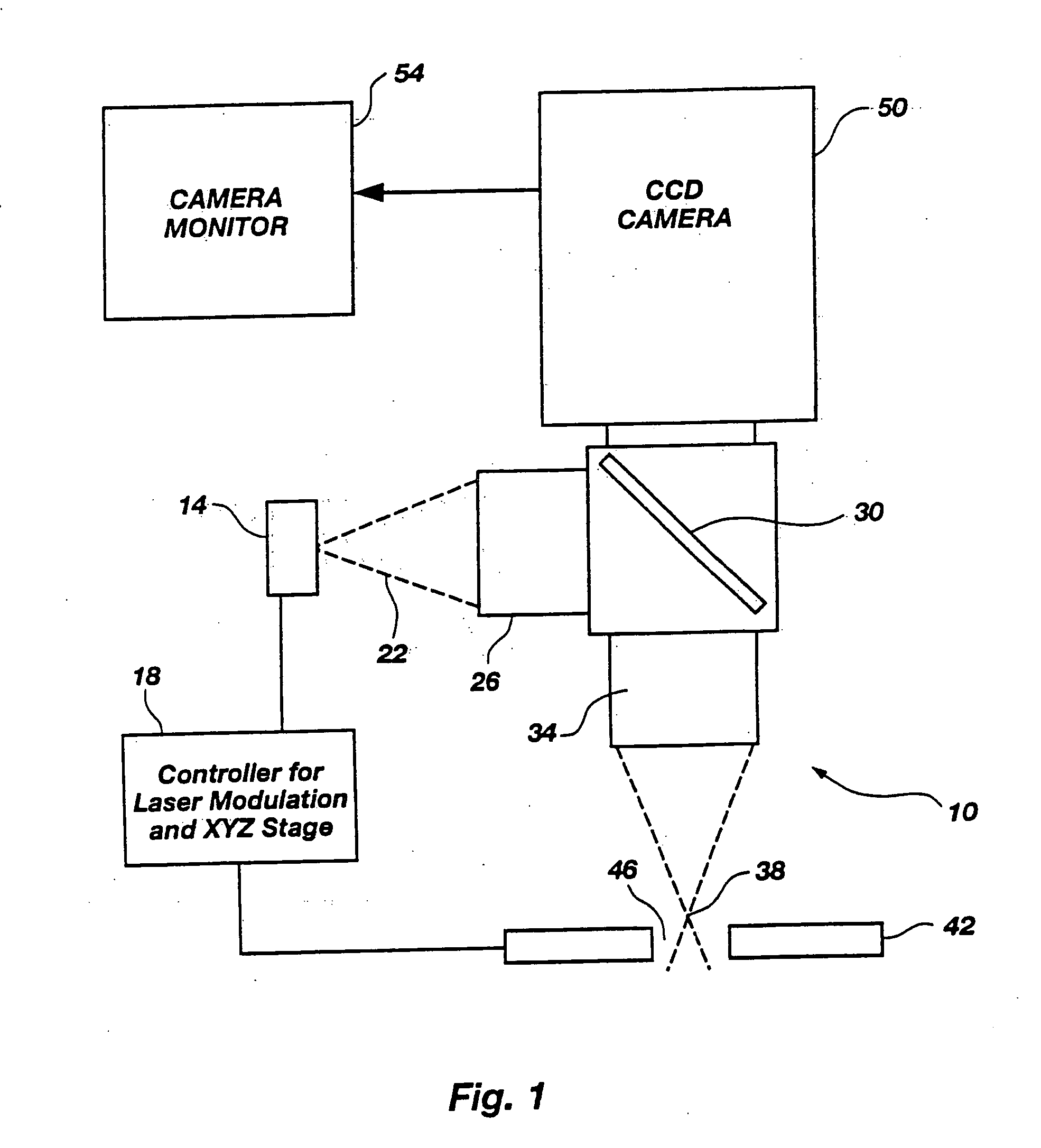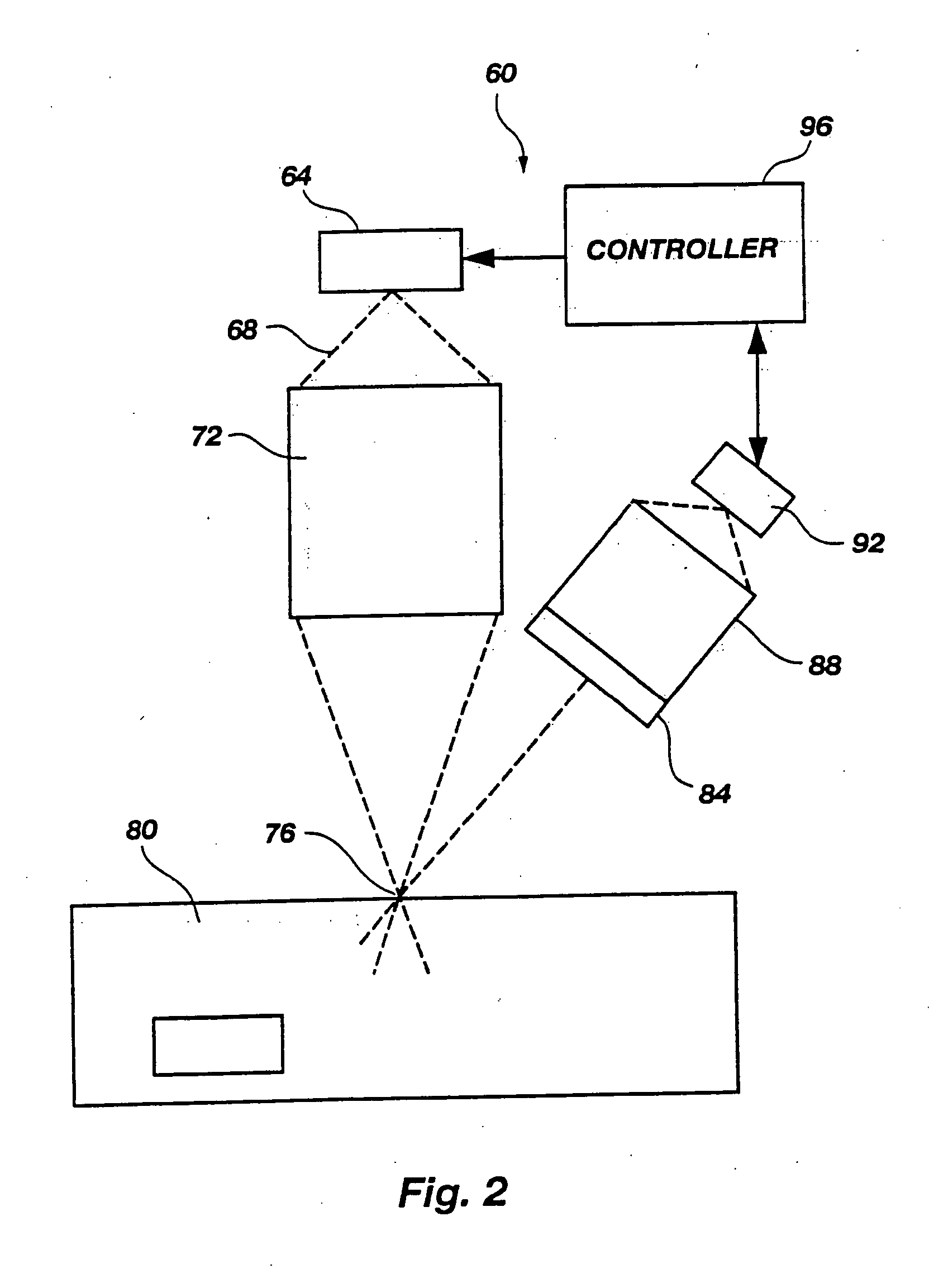Microporation of tissue for delivery of bioactive agents
a bioactive agent and tissue technology, applied in the field of transmembrane delivery of drugs or bioactive molecules to an organism, can solve the problems of long lag time, difficult to control drug delivery, irreversible skin damage, etc., and achieve the effect of reducing the barrier properties of the stratum corneum and enhancing the flux of said ink into the body
- Summary
- Abstract
- Description
- Claims
- Application Information
AI Technical Summary
Benefits of technology
Problems solved by technology
Method used
Image
Examples
example 1
[0174] In this example, skin samples were prepared as follows. Epidermal membrane was separated from human cadaver whole skin by the heat separation method of Klingman and Christopher, 88 Arch. Dermatol. 702 (1963), involving the exposure of the full thickness skin to a temperature of 60° C. for 60 seconds, after which time the stratum corneum and part of the epidermis (epidermal membrane) were gently peeled from the dermis.
example 2
[0175] Heat separated stratum corneum samples prepared according to the procedure of Example 1 were cut into 1 cm2 sections. These small samples were than attached to a glass cover slide by placing them on the slide and applying an pressure sensitive adhesive backed disk with a 6 mm hole in the center over the skin sample. The samples were then ready for experimental testing. In some instances the skin samples were hydrated by allowing them to soak for several hours in a neutral buffered phosphate solution or pure water.
[0176] As a test of these untreated skin samples, the outputs of several different infrared laser diodes, emitting at roughly 810, 905, 1480 and 1550 nanometers were applied to the sample. The delivery optics were designed to produce a focal waist 25 μm across with a final objective have a numerical aperture of 0.4. The total power delivered to the focal point was measured to be between 50 and 200 milliwatts for the 810 and 1480 nm laser diodes, which were capable o...
example 3
[0178] To evaluate the potential sensation to a living subject when illuminated with optical energy under the conditions of Example 2, six volunteers were used and the output of each laser source was applied to their fingertips, forearms, and the backs of their hands. In the cases of the 810, 905 and 1550 nm lasers, the subject was unable to sense when the laser was turned on or off. In the case of the 1480 nm laser, there was a some sensation during the illumination by the 1480 nm laser operating at 70 mW CW, and a short while later a tiny blister was formed under the skin due to the absorption of the 1480 nm radiation by one of the water absorption bands. Apparently the amount of energy absorbed was sufficient to induce the formation of the blister, but was not enough to cause the ablative removal of the stratum corneum. Also, the absorption of the 1480 nm light occurred predominantly in the deeper, fully hydrated (85% to 90% water content) tissues of the epidermis and dermis, not...
PUM
 Login to View More
Login to View More Abstract
Description
Claims
Application Information
 Login to View More
Login to View More - R&D
- Intellectual Property
- Life Sciences
- Materials
- Tech Scout
- Unparalleled Data Quality
- Higher Quality Content
- 60% Fewer Hallucinations
Browse by: Latest US Patents, China's latest patents, Technical Efficacy Thesaurus, Application Domain, Technology Topic, Popular Technical Reports.
© 2025 PatSnap. All rights reserved.Legal|Privacy policy|Modern Slavery Act Transparency Statement|Sitemap|About US| Contact US: help@patsnap.com



